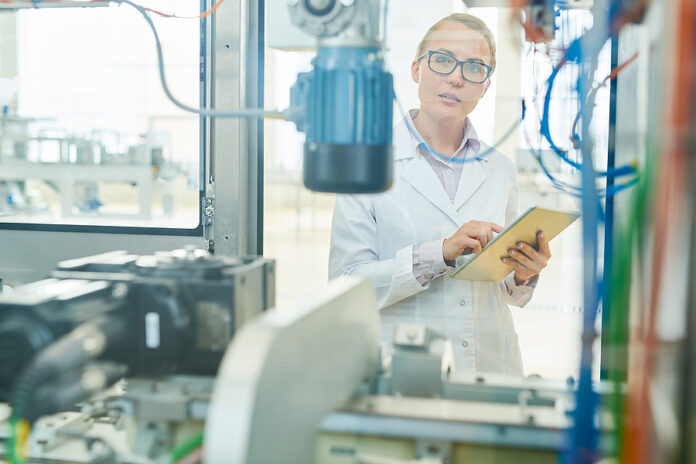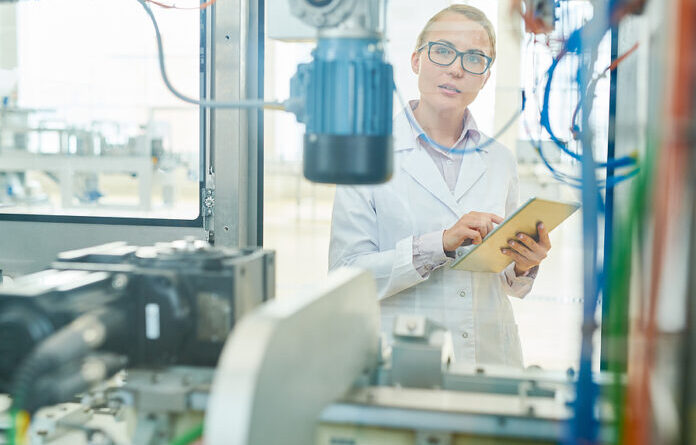From Farm to Future: How Technology is Fueling the Food Industry – Food Industry Manager

By Matthew Inniger, Program Director at CIFT, part of Ohio MEP
Important information:
- The food industry is fast-paced, driven by improved sensor technology and data-gathering capabilities, enabling manufacturers to better understand their ingredients, products and operations.
- Five major themes are reshaping the industry: supply chain (managing SKUs / multiple ingredients), digitization, automated systems / automation, increased consumer awareness of food sourcing / performance, and operational requirements.
- Although new technologies offer many advantages (24/7 operations, better accuracy, predictive analytics), they also present challenges including high financial investments and the need for specialized skills. data analysis and programming.
In the past, data collection in the food industry was limited to many food manufacturers for several reasons – they may not have the experience or tools to collect and analyze data, they may not know how where to start, or because they are laser focused. getting products to their customers. With the continuous development of sensor technology and its availability to manufacturers of all sizes, adaptation to the food industry is inevitable. By using these technologies, food companies are now able to better understand their ingredients, products and processes.
The Center for Innovative Food Technology (CIFT) and JobsOhio recently commissioned a study on the state of the food industry. The results highlighted five topics that impact the food industry the most and make technological change in the industry even more of an issue.
Supply chain flexibility
Supply chain disruptions have forced food manufacturers to make rapid changes, improve risk management, and explore new channels for suppliers and consumers. Supply chain disruptions in this industry are nothing new. We’ve seen an increase in supply chain challenges as consumers demand more flavors and options for their products that require food processors to find additional stock keeping units (SKUs).
Food manufacturers often need to be able to handle 200 ingredients for 60 SKUs even when a large portion of their revenue comes from other core products. A high number of SKUs and additional ingredients creates new, potential environmental risks such as traceability issues, operational requirements or storage-related challenges.
The commitment to address this challenge has produced solutions that allow rapid adaptation to new supply constraints, real-time location tracking, and alternative data acquisition with AI-driven algorithms.
Digitizing the food industry
As manufacturing becomes more sophisticated, manufacturers need to understand what technology is available and how it can be incorporated into their operations to accommodate the industry’s ongoing demands for increased transparency and security. These changes are not only driven by compliance requirements, but they are also driven by retailers who need their suppliers to be able to participate in digital supply networks that help reduce compliance issues.
The greater the investment in measuring methods for raw materials and finished products, the easier it is to improve performance. For example, the shelf life of a product can be greatly improved by accurately measuring water in real time.
Collecting data from the processes will help to develop the same process and reduce the dependence on the specialized knowledge of key people.
Autonomous systems in the age of Industry 4.0
Automated systems are poised to revolutionize the food industry. They provide many benefits, such as driving productivity improvements, enabling 24/7 operations, reducing labor costs, increasing uptime, reducing equipment breakdowns, and improving accuracy and stability.
Advances in sensor technology have enabled some food manufacturers to integrate artificial intelligence. This data acquisition system can generate complex biological data and products, allowing developers to automate processes and gain valuable insights from data analysis, a process that has long been used in other industries.
While automation offers many benefits, it also comes with challenges. Automation often requires large investments and the acquisition of advanced data analysis and programming skills, both of which are in high demand in all sectors. Also, you’ll need to plan a timeline for your employees to complete onboarding, which may delay your return on investment while your employees are being trained to use the technology.
Food consumption awareness
Consumers who are more aware of their food consumption are looking for a wider variety of options and more intuitive processes. They are looking for brands that express their commitment to reducing their environmental footprint. To address this need, food manufacturers can provide consumers with information that further explains how to find the product, made available through methods such as QR codes and interactive website features. and environmental impact.
Consumers also desire increased personalization and convenience in shopping, purchasing and shipping. This approach has led to developments such as providing additional channels for product distribution such as direct to consumer, improving ordering processes such as shipping and packaging, and increasing the methods of increase customer engagement such as customization options.
Stable operation
The food industry is expected to face more stringent regulations on emissions, resource use and waste. Fortunately, advanced technology makes it possible to manage resources effectively.
Many food companies now have the opportunity to make significant improvements by improving their waste streams and following developments in this area.
The most successful companies are those that improve their resources while solving problems and finding the right opportunities for improvement while practicing cost reduction. For example, is the food stored in a way that will keep it fresh for as long as possible?
Technological change
The food industry is undergoing a major transformation driven by technological advances. The changing supply chain and the evolution of the food industry are changing the way businesses operate. Autonomous systems are poised to revolutionize the industry, with AI and advanced sensor technology enabling automation and predictive data analysis. As the industry anticipates stricter regulations on emissions, resource use and waste, these advanced technologies will play a key role in managing resources efficiently, ensuring compliance and sustainability.
 Matt Inniger has been with CIFT, which is part of Ohio MEPfor three years, during which time it has worked with hundreds of companies providing a variety of engineering solutions needed to meet unique requirements. He manages CIFT’s Advanced Technology Program in the areas of automation and robotics. Matt also supports the Product Development team on specific projects, bench work and product development.
Matt Inniger has been with CIFT, which is part of Ohio MEPfor three years, during which time it has worked with hundreds of companies providing a variety of engineering solutions needed to meet unique requirements. He manages CIFT’s Advanced Technology Program in the areas of automation and robotics. Matt also supports the Product Development team on specific projects, bench work and product development.

#Farm #Future #Technology #Fueling #Food #Industry #Food #Industry #Manager
